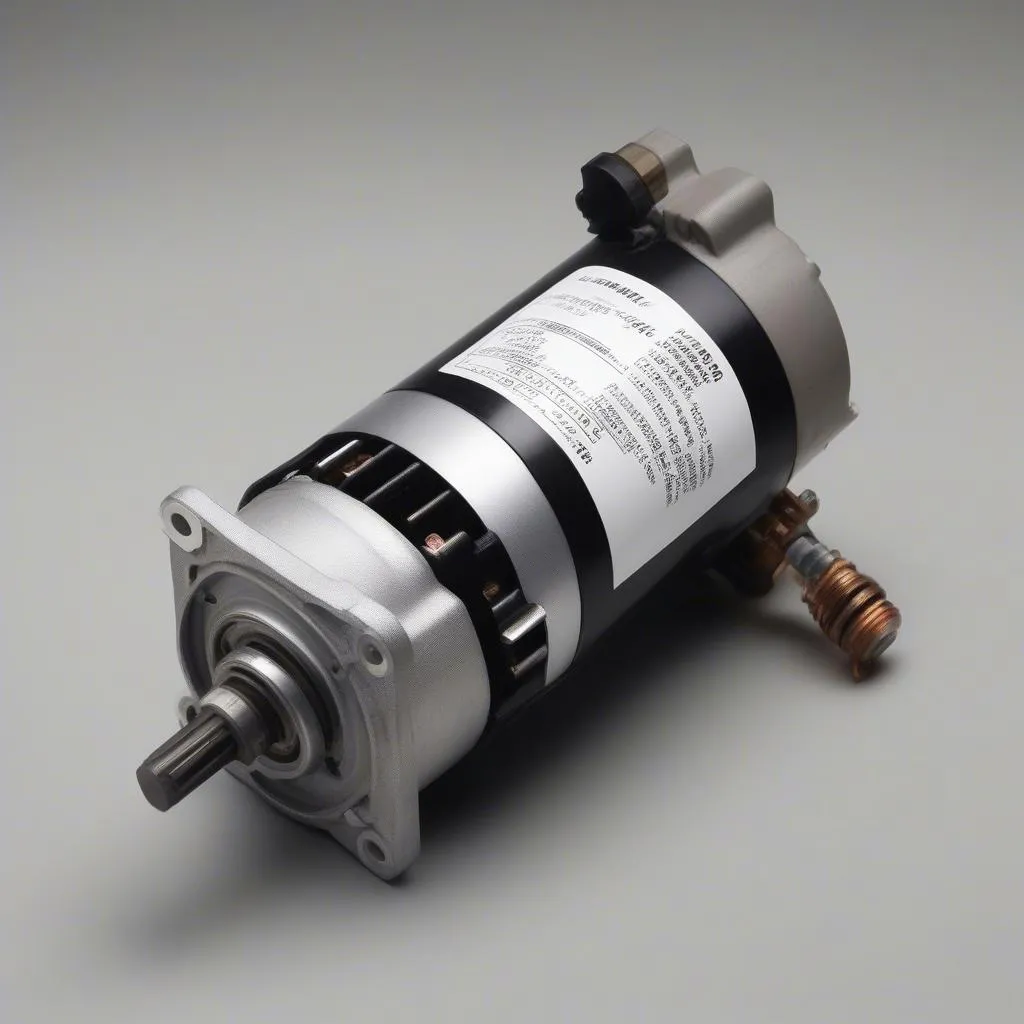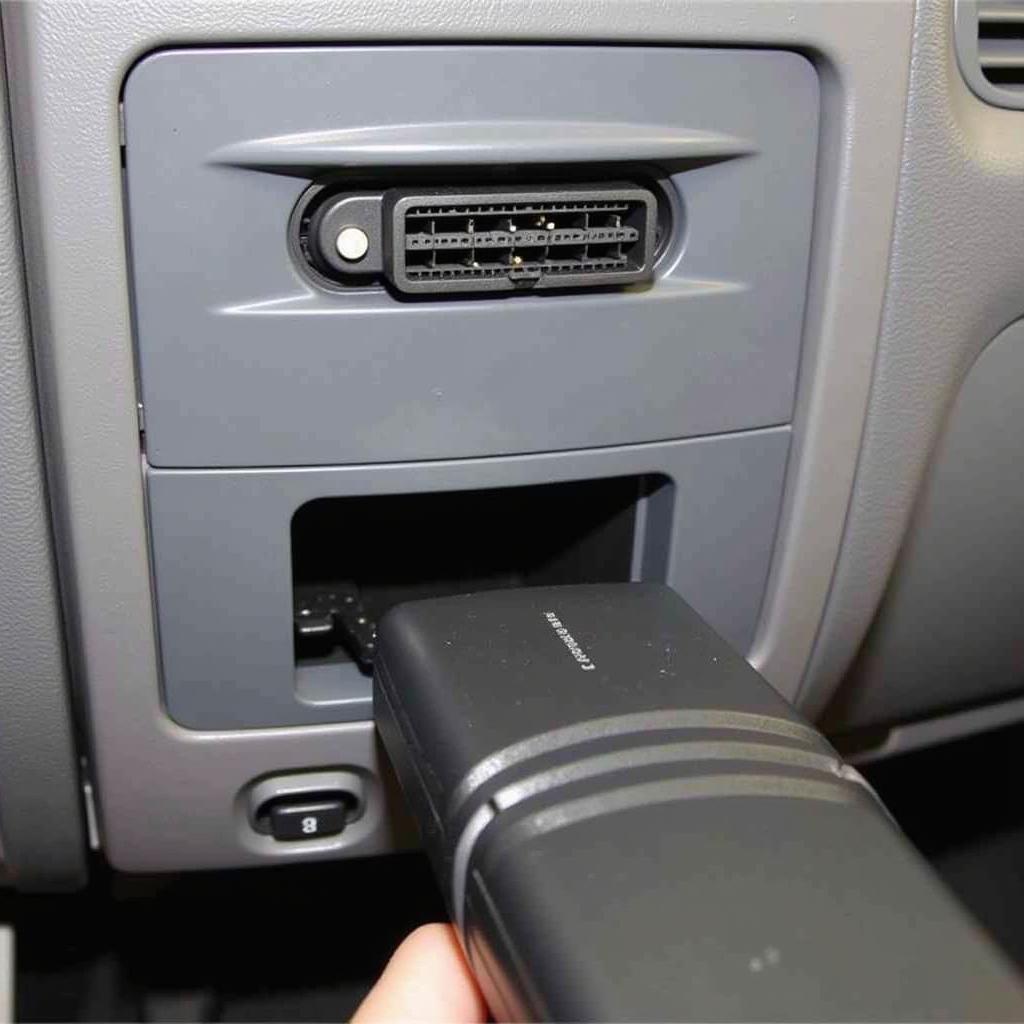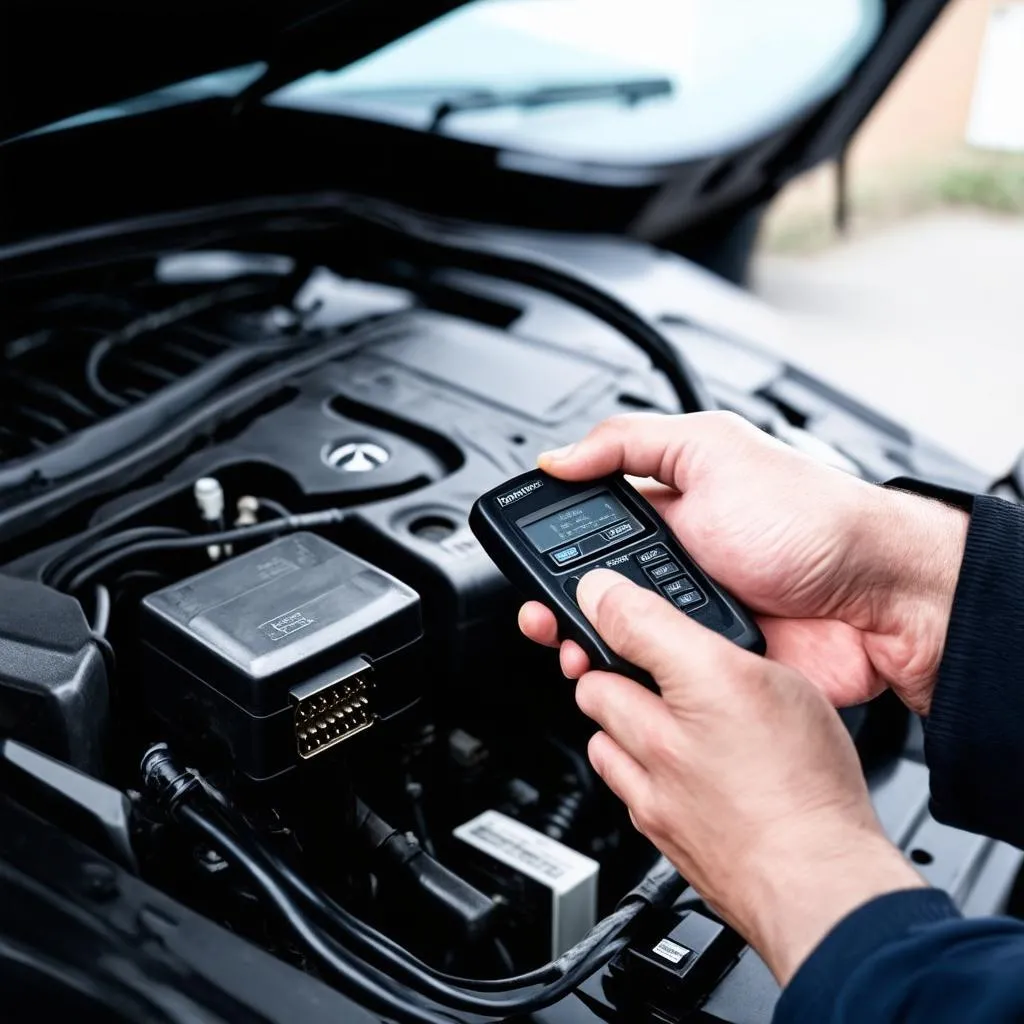Experiencing a start error on your 1998 Mercedes S500 can be incredibly frustrating. Is your luxury vehicle refusing to turn over? Don’t panic. We’ll walk you through potential causes and give you the knowledge to get your S500 roaring back to life.
Understanding the “Start Error”
Before we dive into solutions, it’s important to understand what a “start error” encompasses. This isn’t a specific diagnostic code but rather a general term for when your car won’t start. In the case of the 1998 S500, this could manifest as:
- Cranks but won’t start: The engine turns over but fails to ignite.
- Clicking sound but no crank: You hear a clicking from the starter but the engine doesn’t turn over.
- Complete electrical dead: No lights, no sounds, no response when you turn the key.
Common Causes and Solutions
Let’s break down the most common reasons your 1998 Mercedes S500 might be experiencing start errors:
1. Battery Issues: The Usual Suspect
Problem: A weak or dead battery is often the culprit behind start errors. The S500’s sophisticated electronics require a considerable amount of power.
Symptoms:
- Dim interior lights
- Slow cranking
- Clicking sounds when trying to start
car-battery-terminals|car battery terminals|Close-up photo of car battery terminals with visible corrosion.
Solution:
- Check Battery Voltage: Use a multimeter to check the battery voltage. A fully charged battery should read around 12.6 volts.
- Jumpstart: If the battery is low, attempt a jumpstart. (Refer to your owner’s manual for the correct procedure).
- Replace Battery: If the battery is old or fails to hold a charge, it’s time for a replacement.
2. Starter Motor Malfunction: The Engine’s Kick-Starter
Problem: The starter motor is responsible for turning the engine over to begin combustion. If it fails, your engine won’t start.
Symptoms:
- A single click when turning the key
- Grinding noise during start attempts
- Starter motor runs but engine doesn’t turn over
car-starter-motor|car starter motor|Photo of a car starter motor against a white background.
Solution:
- Diagnosis: Diagnosing a faulty starter often requires testing its electrical connections and potentially removing it for inspection.
- Replacement: A malfunctioning starter motor typically needs to be replaced.
3. Ignition System Faults: The Spark of Life
Problem: The ignition system provides the spark that ignites the fuel in your engine. Problems here mean your engine won’t fire up.
Symptoms:
- Engine cranks but doesn’t start
- Backfiring
- Rough idling
Solution:
- Check Spark Plugs: Inspect the spark plugs for wear, damage, or fouling. Replace if necessary.
- Inspect Ignition Coils: Faulty ignition coils can prevent spark. These may need testing and potential replacement.
- Examine Ignition Wires: Cracked or worn ignition wires can disrupt the spark. Check for damage and replace as needed.
4. Fuel System Problems: No Fuel, No Fire
Problem: If fuel isn’t reaching the engine, starting is impossible. This could be due to a faulty fuel pump, clogged fuel filter, or other fuel delivery issues.
Symptoms:
- Engine cranks but doesn’t catch
- Sputtering engine
- Smell of gasoline
Solution:
- Listen for Fuel Pump: Turn the key to the “on” position (without starting). You should hear a brief humming sound indicating the fuel pump is priming.
- Check Fuel Pressure: A mechanic can use a gauge to check fuel pressure at the fuel rail.
- Inspect Fuel Filter: A clogged fuel filter restricts fuel flow. Replace if necessary.
car-fuel-filter|car fuel filter|A dirty car fuel filter.
5. Sensor Failures: The Brain’s Messengers
Problem: Modern cars like your S500 rely on various sensors to control engine functions. A faulty sensor, such as the crankshaft position sensor or camshaft position sensor, can prevent starting.
Symptoms:
- Engine cranks but doesn’t start
- Intermittent starting problems
- Check Engine light illuminated
Solution:
- Retrieve Diagnostic Trouble Codes (DTCs): Use an OBD-II scanner, like those offered by Cardiagtech, to read any stored fault codes. These codes can pinpoint the problematic sensor.
- Consult Repair Manuals: Refer to your S500’s repair manual or a trusted online resource for guidance on testing and replacing specific sensors.
Essential Tools for Diagnosing Start Errors
Having the right tools can make diagnosing and fixing start errors easier:
- Digital Multimeter: Measures voltage and resistance to check battery health, starter motor circuits, and more.
- OBD-II Scanner: Reads diagnostic trouble codes to pinpoint sensor failures, engine misfires, and other issues. Consider CARDIAGTECH’s range of reliable and user-friendly scanners.
- Basic Hand Tools: A set of sockets, wrenches, screwdrivers, and pliers will be helpful for various repairs.
Frequently Asked Questions
Q: My 1998 S500 starts then immediately dies. What could be wrong?
A: This could indicate a problem with the immobilizer system, crankshaft position sensor, or fuel delivery.
Q: The “Check Engine” light is on. Can this cause start errors?
A: Yes, a illuminated Check Engine light can indicate a problem that prevents starting, such as a faulty sensor. Use an OBD-II scanner to read the code.
Q: How often should I replace my S500’s battery?
A: Car batteries typically last 3-5 years. Factors like climate and usage can affect their lifespan.
Q: Can I drive my S500 with a jumpstart, or should I replace the battery immediately?
A: While a jumpstart can get you going temporarily, it’s crucial to have your battery tested and likely replaced if it’s failing.
Conclusion: Getting Back on the Road
A start error on your 1998 Mercedes S500 can be a frustrating experience. However, by understanding the common causes and following the troubleshooting tips outlined in this guide, you can often identify and resolve the issue. Remember that safety is paramount when working on your vehicle. If you’re unsure about any step of the process, don’t hesitate to seek assistance from a qualified mechanic.



